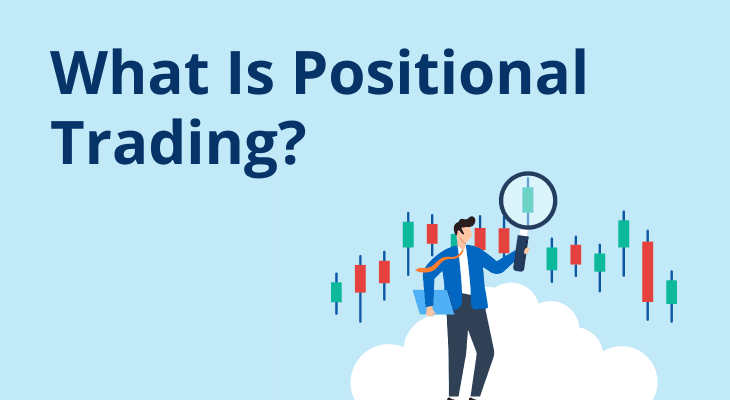
How to Choose the Best Time Frame for Intraday Trading?
Intraday trading offers you the chance to buy and sell stocks and commodities within a single trading session. This approach focuses on capturing short-term price movements. For you, selecting the best time frame for intraday trading is an essential decision that shapes how you view price action, how quickly you respond to market fluctuations and how effectively you manage risk.
In this blog, we will talk about how to determine which time frame is best for intraday trading, how market hours influence your decisions, and practical guidance to help you refine your intraday trading approach.
The Role of Time in Intraday Trading
Time frames in intraday trading refer to the intervals such as one minute, five minutes or fifteen minutes over which price data is aggregated on a chart. Your choice of interval affects several core aspects of your trading:
- Trend Identification: Shorter intervals reveal micro-trends and rapid shifts in sentiment. If you favour quick scalping techniques or wish to capitalise on minute-by-minute reversals, you might prefer one or five minute charts. Longer intervals, such as fifteen or thirty minute charts, help you see the broader direction of the market, smoothing out random fluctuations that can hide genuine trends.
- Decision Speed: When volatility spikes, you need to decide swiftly. A one-minute chart updates every sixty seconds, enabling you to react almost instantly to emerging patterns. Conversely, a fifteen-minute chart gives you more time to assess, reducing stress but potentially causing you to miss rapid moves.
- Risk Management: Different time frames carry different noise levels. On a one-minute chart, minor fluctuations may trigger false signals, leading to frequent stop-outs. A longer interval filters out such noise, allowing you to set wider stops and focus on substantial price swings. Understanding which time frame best matches your risk tolerance is crucial.
Time Structure of Indian Stock Markets
The National Stock Exchange (NSE) and Bombay Stock Exchange (BSE) operate between 9:15 AM and 3:30 PM Indian Standard Time. However, market activity varies considerably throughout the day:
Period | Time | Volatility | Liquidity | Opportunity |
|---|---|---|---|---|
Pre-Open | 9:00 AM – 9:15 AM | Low | Low | Order matching; preparation |
Opening Hour | 9:15 AM – 10:15 AM | Very high | Very high | Breakouts & sharp moves |
Mid-Morning | 10:15 AM – 12:00 PM | Moderate | High | Trend confirmations |
Mid-Day | 12:00 PM – 1:00 PM | Low | Moderate | Calm trading; range-bound strategies |
Afternoon Resumption | 1:00 PM – 2:30 PM | Moderate | High | Trend resumption; news reactions |
Closing Hour | 2:30 PM – 3:30 PM | High | Very high | Position squaring; momentum trades |
Choosing the Right Chart Time Frame
Common intraday time frames include:
One-Minute Charts
- Best For: Scalpers looking for numerous small profits.
- Advantages: Instantaneous feedback on price moves.
- Challenges: High noise; demands constant screen time and quick reflexes.
Five-Minute Charts
- Best For: Traders targeting a blend of speed and signal reliability.
- Advantages: Smoother than one-minute charts, yet still responsive to evolving trends.
- Challenges: Can remain choppy, especially during low-volume sessions.
Fifteen-Minute Charts
- Best For: Those seeking a balanced view of intra-day trends.
- Advantages: Reduces false signals; highlights key levels more clearly.
- Challenges: Slower signals mean some rapid opportunities may slip away.
Thirty-Minute and Sixty-Minute Charts
- Best For: Traders who favour less rapid pace and want broader context.
- Advantages: Filters noise exceptionally well and reveals comprehensive session themes.
- Challenges: Entry and exit points arrive less frequently, not ideal for quick trades.
To find which time frame is best for intraday trading for you, experiment in a risk-free environment. Note your win rate, average gain and drawdown for each interval. Over time, you will see which chart aligns with your temperament, capital size and daily availability.
Strategy Alignment: Volatility, Liquidity & Market Conditions
Your intraday trading timing should reflect prevailing conditions:
- Exploiting High Volatility
Opening and closing hours often bring vigorous swings. Use short-interval charts to capture breakouts, but always anchor your trade with a well-placed stop. For example, if a stock breaches its opening high on the five-minute chart, you might enter long with a stop just below the breakout candle. - Trading in Low-Volatility Periods
During mid-day lulls, price action often moves sideways. This scenario favours range-bound methods. On a fifteen-minute chart, draw horizontal support and resistance lines, and buy near the lower bound, sell near the upper. - Choosing Liquid Instruments
High-volume stocks reduce slippage and ensure rapid execution. Blue-chip names, index futures or popular exchange-traded funds (ETFs) typically allow you to enter and exit positions without delay. On slower intervals, liquidity matters less, but on one-minute charts it is critical. - Responding to Market News
Scheduled announcements corporate results, policy updates or macroeconomic data can trigger spikes in volatility. Anticipate these events by reviewing an economic calendar pre-market; if you expect a major release, you may switch to longer intervals to avoid being whipsawed by erratic spikes.
Risk Management Considerations
Regardless of your chosen time frame, rigorous risk controls are essential:
- Position Sizing: Determine the maximum capital you will risk per trade, often no more than 1%–2% of your total trading fund. Smaller bets help you withstand a string of losses without significant drawdown.
- Stop-Loss Placement: Define stops to your chart interval. On one-minute charts, you might set a tight stop of a few points but on fifteen-minute charts, you can afford wider stops that accommodate larger intraday swings.
- Profit Targets: Define profit objectives based on typical range sizes for your time frame. For example, if a five-minute bar often moves 10–15 points, you might aim for a similar move rather than an outsized target that rarely materialises.
- Avoid Overtrading: Resist the urge to hunt for setups when none align with your rules. Sticking to your chosen intervals and strategy, filters out emotionally driven trades that can reduce gains.
Practical Tips and Examples
- Use Multiple Time Frame Analysis
Combine a higher interval to assess trend direction with a lower interval for precise entry. For example, if the thirty-minute chart shows an uptrend, wait for a pullback on the five-minute chart to enter. - Demo Practice
Test different time frames in a simulated account. Document your performance over at least fifty trades per interval to gather reliable data. - Adapt to Changing Conditions
If midday volume unexpectedly increases, consider switching from a fifteen-minute to a five-minute chart to capture shorter bursts of activity.
Example Scenario:
You observe a major banking stock breaking above its morning high on the fifteen-minute chart at 9:50 AM. To align risk and reward, you place a buy order at that breakout price with a stop-loss five minutes below the breakout candle’s low on the five-minute chart. You set a profit target equal to your stop distance, ensuring a one-to-one risk-reward ratio. When the price reaches your target by 10:10 AM, you exit with a gain. This example shows synchronizing intervals for trend confirmation and entry precision.
Discipline & Consistency in Time Frame Usage
True mastery of intraday trading timing comes from constantly sticking to your chosen plan:
- Commit to One or Two Time Frames
Constantly switching intervals dilutes your expertise. Focus on one-minute and five-minute charts, for instance, until you build proven confidence and gain expertise. - Pre-Define Your Rules
Decide beforehand your exact criteria for entry, stop-loss and profit-taking. This could read: “Enter long when the five-minute close crosses above its 20-period moving average, with stop-loss at the prior swing low.” - Adopt Routine
Conduct the same pre-open checklist daily: review economic events, confirm your watchlist, ensure platform readiness and verify margin requirements. - Continuous Learning
Markets evolve. Allocate time each week to back-test new ideas on historical data, adjusting your rules only after you accumulate sufficient evidence.
Consistency breeds clarity. By reducing variables, you isolate what truly drives your performance.
Conclusion
Selecting the best time frame for intraday trading is not a one-size-fits-all decision. It depends on your risk appetite, available time, preferred style and the market’s moment-to-moment behaviour. Beginners often find fifteen-minute charts during mid-day sessions forgiving, while experienced traders may exploit one or five minute intervals at market open and close.
By aligning your chart interval with volatility, liquidity and risk-management principles and by practising discipline and consistency, you will gradually develop the expertise and precision needed to grow in the fast-paced world of intraday trading.
FAQ
What factors determine the best time frame for intraday trading?
Your risk tolerance, the speed at which you wish to trade and the level of noise you can tolerate all influence the ideal chart interval for intraday trading.
Can I trade multiple time frames in the same session?
Yes, using a higher interval for locating trend direction and a lower one for entry can refine your intraday trading experience. Ensure you pre-define how you will combine those signals.
Is it better to trade during the opening hour or mid-day?
It depends on your style. Opening and closing hours offer strong trends but require strict stops. Mid-day sessions tend to be quieter, suiting range-bound strategies.
How do I know when to switch between one-minute and fifteen-minute charts?
Only switch if you observe a sustained change in volatility or volume. Back-test the switch on historical data first to ensure it enhances performance.
What is the role of stop-loss on different time frames?
Short intervals call for tighter stops to avoid being stopped out by random blips. Longer intervals permit wider stops that accommodate larger moves.
How important is market liquidity when choosing a time frame?
Liquidity is crucial for intraday trading. Illiquid stocks can exhibit erratic price jumps, especially on shorter charts. Stick to liquid names if you trade one- or five-minute intervals.
Should I adjust my time frame on major news days?
Yes. On high-impact event days, volatility can render short intervals too erratic. Consider using fifteen- or thirty-minute charts until the dust settles
How do I maintain discipline when trading multiple time frames?
Limit yourself to one or two intervals and follow clearly written entry/exit rules. Use alarms or automated orders to enforce those rules.
What is the benefit of a trading journal for time frame selection?
A journal provides objective performance data for each interval, helping you see which time frame consistently delivers positive results.
How long should I test a new time frame before using it with real money?
Aim for a minimum of fifty to a hundred demo trades per interval. Only move to live capital once you have a stable edge in simulated conditions.


